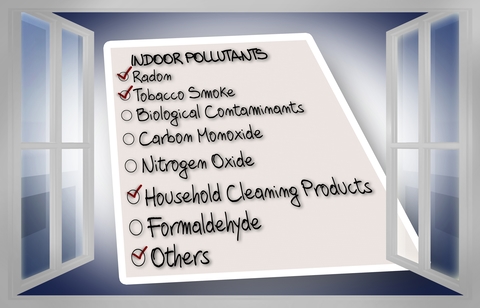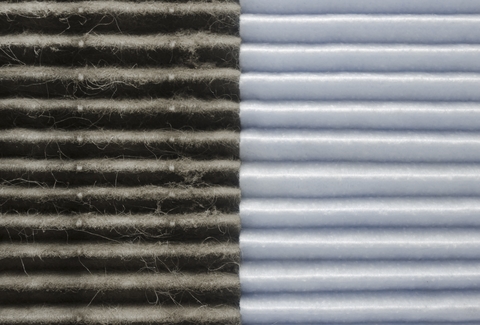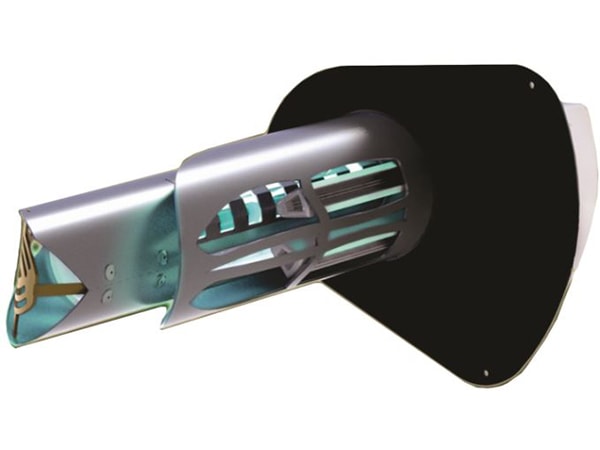How Can Your Heater Remove Odors From Your Home?

Use Your HVAC System to Remove Odors and Improve Indoor Air Quality
Improving your indoor air quality involves more than just getting rid of pollutants such as pollen or dander. You also need to remove odors in your home.
Getting rid of nasty, persistent smells isn’t just a cosmetic concern. It can also improve your breathing and your health overall.
And you can use your heater to do it.
In this post, we’re looking at what’s probably the most effective, across-the-board way to get rid of unhealthy and irritating odors: A whole-home air purifier connected to your HVAC system.
This way, you’re improving your air quality and eliminating odors whenever you’re running your heater.

We’ll go over why it’s important, how it works, and how we install it.
Fair warning — some of this will sound like science fiction. But, we’ve been installing these for years in Marmora, Ocean City, and other South Jersey towns. And we’ve got plenty of satisfied customers breathing easier.
If you have any questions about these, reach out to us here at Broadley’s! We’re happy to help.
How Odors Affect Indoor Air Quality
Stale, foul, or unpleasant smells from cigarette smoke, garbage, or even pets are also pollutants that affect your indoor air quality. They come with bacteria, dander, nicotine, and other contaminants that make it hard to breathe.
They’ll trigger allergies and asthma attacks. And, second- or third-hand smoke will harm anyone who comes into contact with it.
VOC’s
The key phrase when we’re talking about odor is Volatile Organic Compounds or VOCs.
These are chemical compounds that vaporize easily. So, they end up in the air —and often as odors.
The specific examples of these sound like a flashback to chemistry class: ethylene glycol, methylene chloride, tetrachloroethylene. More to the point: They come from composite wood products, air fresheners, cosmetics, cooking, smoking and more.
So, if you’re noticing strong aromas in the house, odds are a VOC causes it — and it’s not good for you.
Sprays and Room Purifiers
You can use a spray to “get rid” of the odors. But, most just mask the smell. And, once your heater or AC is running, your windows or shut so you can’t air out the house.
You’ve likely seen simple, plug-in air purifiers that can treat a room. These work by pulling air into them with a fan, then filtering out small particles.
It’s similar to how the air filter in your furnace works: Dust and other pollutants get trapped by the screen as they pass through your HVAC system.
However, the purifiers usually have much smaller filters to trap smaller particles such as bacteria or pollen. And, they’ll catch more of them by working in a specific room.
That works fine for making some small improvements to your indoor air quality. But, these can only make so much of an impact.
For people who are especially sensitive, or who want to get rid of strong odors, however, this isn’t strong enough.
That’s when you get your heater involved.
Indoor Air Purifiers For the Whole House
You can install a whole-home air purifier to your HVAC system. In part, they work like the filters, trapping particles as they pass through.
But, those regular filters only catch around 40 percent of the airborne particles that can cause trouble. You can get stronger ones, but they’re more expensive. And, if you get one that’s too strong, it will start blocking air from getting through as well.
If your HVAC system isn’t strong enough to push the air through a stronger filter, then you’ll end up with weak air circulation. Too powerful, and you can even do some damage to your heater.
However, a whole-home indoor air purifier works differently. First, it optimizes your filter to trap even more, and even smaller contaminants.
Then, it actively seeks out pollutants throughout the house and neutralizes them.
How Do Indoor Air Purifiers Work?
When we’re talking about whole-home indoor air purifiers, at Broadley’s, we’re talking about the Reme Halo in particular. It uses state-of-the-art technology to reduce odors, bacteria, smoke, and even up to 99 percent of germs from sneezes within three feet.
It works using a combination of ultraviolet light and by producing hydro-peroxide plasma to purify air and surfaces in your home.
See? We told you there’d be some sci-fi stuff.
Let’s break these down.
First, there’s the ultraviolet, or UV, light. It kills off mold and bacteria particles as it passes through the system. Compare that to your filter, which traps the contaminants until you throw it out and put in a new one.

used phones and cigarette under UV light on black bckground with selective focus.
That’s the passive part of the process: Waiting for pollutants to come into the system.
Next is the hydro-peroxide plasma. In a way, it sends a bolt of lightning through your house.
Well, not quite. But, similar.
Without getting too technical, it’s a process by which nature cleans the air outdoors. It occurs when lightning strikes: The air around that electrical charge gets purified.
Of course, the Reme Halo doesn’t send a sudden surge of electricity through the house. Instead, it uses the low-temperature hydrogen peroxide to produce a chemical reaction that “deactivates” airborne molecules.
That’s the active part of the process: Sending those low charges throughout the house to bond with airborne molecules and neutralize them.
There’s a good bit of science behind this. But, long story short: You don’t notice happening, and it doesn’t produce any other smells, lights, or anything like that.
But, you’ll know it’s working when you can breathe easier, and your home even smells cleaner.
Installing a Remi Halo Indoor Air Purifier
So, now that you’ve got an idea of the process, what does it look like?
Well, there’s not much to see. Here’s the actual product:
And, we attach it to your heater or air conditioner. It works on its own, so there’s nothing to turn on or off.
At most, you’ll have to replace the UV bulb once or twice a year. But, that’s something we can handle as well if you’re signed on for regular maintenance.
If you’re curious about what this would look like in your home — and what sort of improvements you can expect — reach out to us here at Broadley’s. We’re happy to answer any questions and give you an idea of what to expect.






